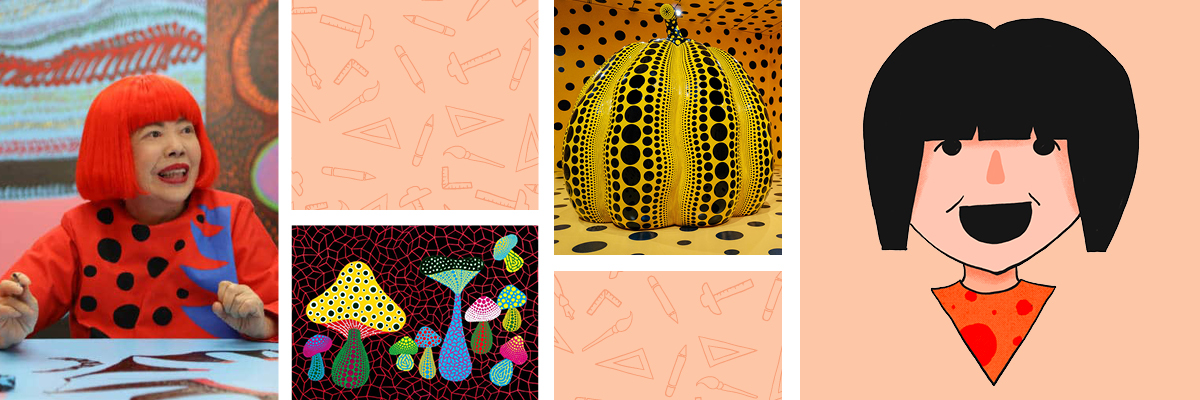Yayoi Kusama 1929 – Present
Asia • Installation Art • Painter • Sculptor • GenderRights • Anti-War
There once was a girl who often saw things differently than others and loved art. Yayoi Kusama grew up in Japan and was the daughter of merchants who owned a plant nursery and seed farm. She did not have a pleasant home life, but always loved to create art. Yayoi would often have to rush to finish her art before her mother would see it as she would take it away to discourage her, because she disapproved. At the age of 13, she worked in a military factory sewing parachutes for the Japanese Army during WWII. Due to parental restrictions during childhood and her experience of the war, Yayoi began to value personal and creative freedom. She studied traditional Nihonga painting, but was greatly inspired by the European and American avant-garde and pop-art movements. The polka-dot aesthetic for which she is well-known was inspired by a vision she had as a young child. Yayoi explains that “a polka-dot has the form of the sun, which is a symbol of the energy of the whole world and our living life, and also the form of the moon, which is calm. Round, soft, colorful, senseless and unknowing. Polka-dots become movement … Polka dots are a way to infinity” (Yayoi Kusama, in Manhattan Suicide Addict). She also credits her art as a positive way to work through her mental health challenges. Yayoi is acknowledged as one of the most important living artists to come out of Japan.
Her story shows us that following your dreams, even if they are not accepted by others, has lasting positive effects on yourself and can lead to success.

